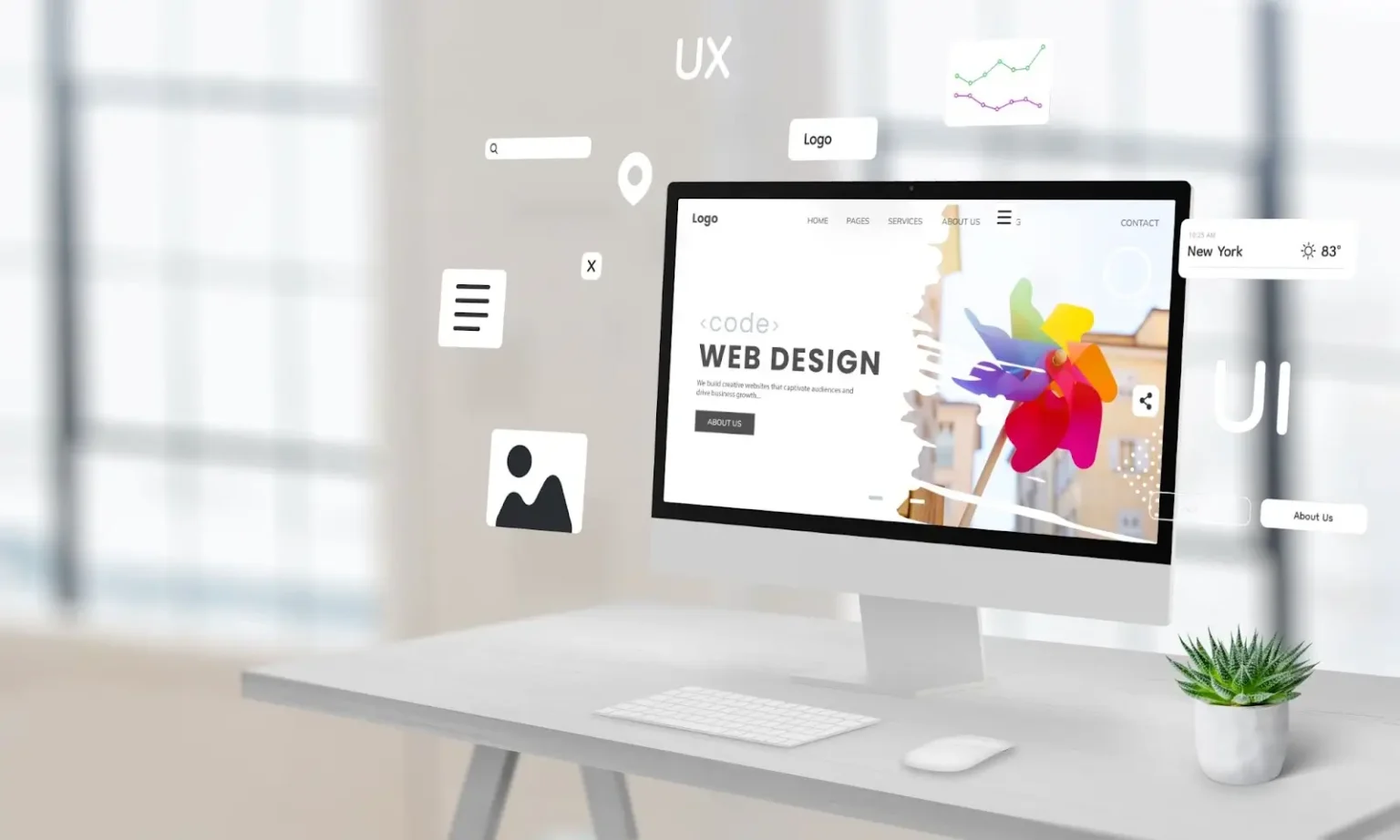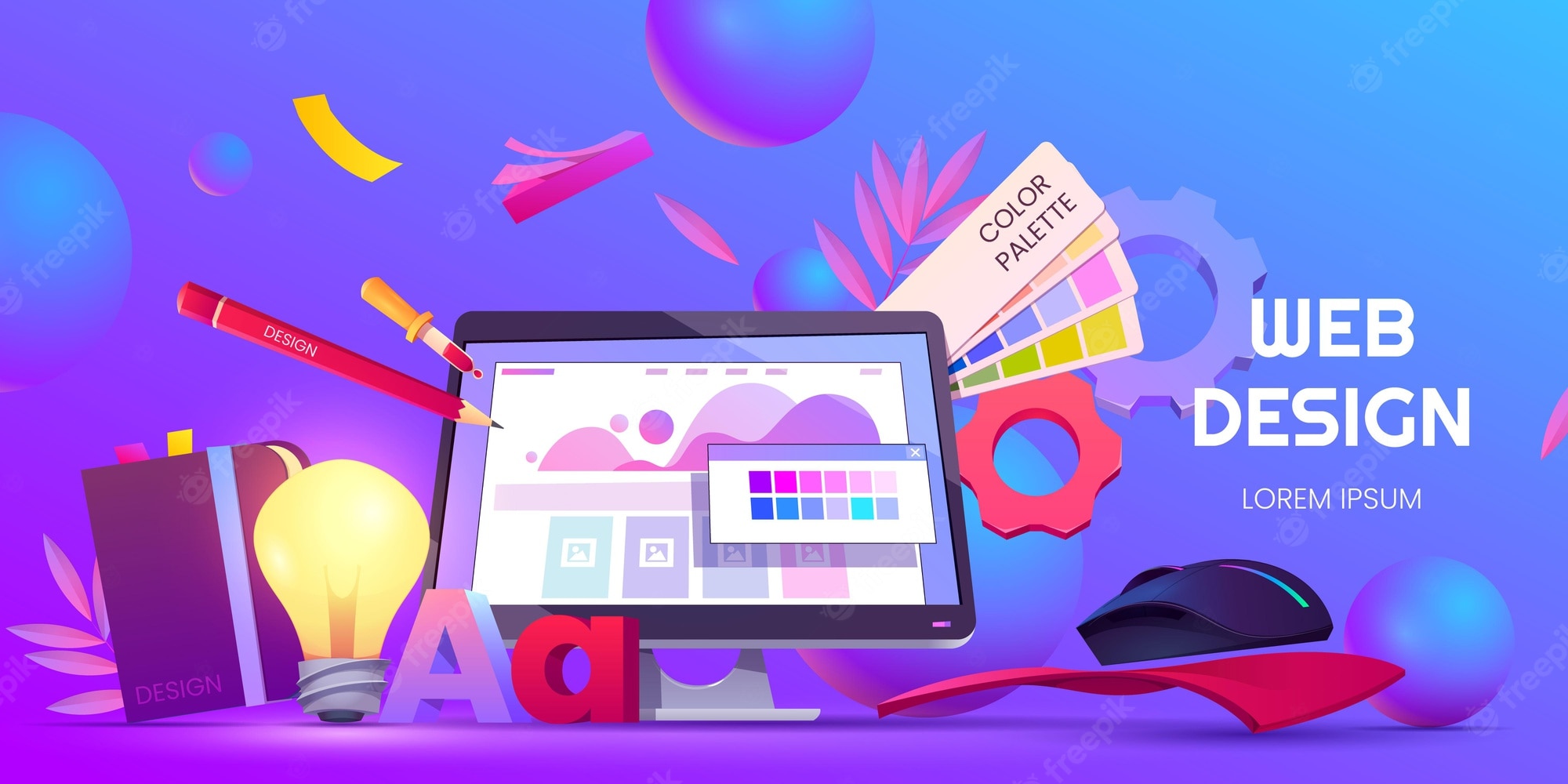Effective UX improvement tips from an agency for web design
The Significance of User Experience in Effective Web Design Strategies
User experience (UX) functions as a foundation in effective web design strategies. It forms how individuals communicate with a website, influencing their fulfillment and probability of returning. A well-designed UX can enhance involvement through user-friendly navigation and receptive designs. Neglecting these aspects may lead to disappointment and increased bounce prices. Comprehending the intricacies of UX is crucial for developers intending to develop compelling digital experiences that resonate with diverse target markets. What variables really drive successful user interaction?
Understanding User Experience and Its Effect On Design
User experience (UX) is usually viewed as a plain aspect of internet layout, it fundamentally forms how customers engage with an internet site. UX incorporates all facets of the user's communication, consisting of usability, access, and general satisfaction. A positive UX promotes interaction, motivating users to explore the site and return in the future. On the other hand, an unfavorable experience can bring about disappointment, leading to high bounce rates and lost possibilities for conversion.
Style components like design, content, and navigating organization play important duties fit this experience. Reliable UX layout prepares for user needs and preferences, making certain that info is quickly available and aesthetically attractive. Additionally, comprehending user actions with analytics can provide valuable insights, notifying design decisions that enhance functionality. Ultimately, a detailed understanding of UX allows designers to develop web sites that not just draw in users but also promote significant interactions that straighten with organization goals and user assumptions.
Secret Concepts of Efficient User Experience
Effective user experience pivots on a number of vital principles that enhance site performance and engagement. User-friendly navigation layout, receptive layout basics, and the importance of aesthetic pecking order are crucial components that add to a seamless communication in between customers and internet content. Comprehending these principles permits designers to create more straightforward and easily accessible digital environments.
User-friendly Navigating Layout
When customers encounter a web site, user-friendly navigating style works as a vital portal to their overall experience. Reliable navigating permits users to easily find the information they seek, enhancing their communication with the site. Key concepts include clear labeling, rational company, and regular placement of navigation aspects. Tags need to be uncomplicated, permitting users to predict the material they will discover. A well-structured hierarchy assists customers understand the relationship in between various areas, guiding them with the website effortlessly. In addition, responsive food selections and conveniently accessible web links add to a liquid experience across gadgets. By prioritizing intuitive navigating, developers can greatly minimize user stress and boost interaction, ultimately promoting a positive perception of the web site and its content.
Responsive Format Basics
A well-structured navigation system naturally results in the requirement for a receptive design, which is vital in today's varied digital landscape. A responsive design assurances that websites function flawlessly across numerous gadgets, consisting of tablet computers, desktop computers, and smartphones. This versatility improves user experience by permitting material to be easily available and aesthetically meaningful, no matter screen size. Secret principles of receptive style include liquid grids, adaptable pictures, and media inquiries, which promote optimal viewing. In addition, prioritizing touch-friendly aspects enhances interaction on mobile tools. By carrying out a receptive format, developers can accommodate customers' needs, reduce bounce prices, and increase interaction. Inevitably, a well-executed responsive style cultivates a positive user experience, urging site visitors to check out the web site additionally.
Visual Hierarchy Relevance
Aesthetic hierarchy plays an important function in assisting individuals via a web site, guaranteeing that crucial details records their focus. By strategically making use of size, shade, spacing, and contrast, developers can create a clear path for users to adhere to. Larger aspects usually attract the eye, showing their significance, while contrasting colors can highlight calls to action. Additionally, consistent placement and grouping of relevant web content improve understanding, making navigation intuitive. Reliable usage of visual pecking order not just improves functionality but also sustains the total visual of the website, promoting a positive user experience. When users can easily determine one of the most vital details, they are most likely to involve with the material, resulting in raised fulfillment and communication with the site.
The Duty of Functionality in Web Design
Usability plays a necessary duty in web design, specifically via navigation simpleness and adherence to availability standards. Reliable navigating boosts user contentment by allowing site visitors to find details quickly and without effort. Meeting availability standards ensures that all users, regardless of their capabilities, can efficiently communicate with the internet site.
Navigation Simpleness
Simpleness in navigation stands as a keystone of efficient web design, substantially influencing user experience. A structured navigation system enables customers to discover info rapidly and intuitively, reducing stress and enhancing fulfillment. Clear labeling and logical framework are necessary aspects, leading users easily with the website. Repetitive web links or excessively complicated menus can confuse individuals, bring about boosted bounce prices. In addition, mobile responsiveness should be considered, ensuring navigation continues to be straightforward throughout gadgets. Decreasing and focusing on essential web pages clutter further supports user engagement. Effective navigation not only promotes a favorable experience but likewise motivates users to check out the website more extensively, ultimately resulting in greater conversion prices. In this respect, navigation simplicity works as a vital consider the general efficiency of web design techniques.
Availability Standards
User involvement is greatly enhanced when web sites abide by access requirements, making sure that check over here all users, no matter of their capabilities, can navigate and communicate effectively. Conformity with these criteria not just widens the audience but additionally enhances general user fulfillment. Accessible style includes features such as text choices for images, key-board navigation, and adequate color contrast, which promote use by people with specials needs. Furthermore, applying these standards can favorably influence seo (SEARCH ENGINE OPTIMIZATION) by improving website framework and clarity. As web design progresses, focusing on accessibility becomes essential in cultivating an inclusive electronic environment. By accepting these criteria, designers add to a more fair you can try these out net, eventually driving user commitment and involvement.
Value of Responsive Design for User Interaction
As customers increasingly gain access to internet sites through a selection of devices, the relevance of receptive design comes to be critical for involving users successfully. Receptive design guarantees that a web site adjusts seamlessly to different screen sizes, offering an ideal watching experience no matter the tool made use of. This flexibility enhances user interaction by promoting less complicated navigation and interaction with content.
When individuals experience a website that is receptive, they are most likely to remain much longer, check out further, and return in the future. A well-designed responsive format decreases the frustration usually connected with zooming and scrolling on smaller sized displays, therefore lowering bounce prices. Furthermore, receptive design can favorably impact search engine rankings, as internet search engine focus on mobile-friendly web sites. In today's electronic landscape, where mobile use remains to climb, implementing receptive style is not just helpful, however crucial for preserving user engagement and ensuring a favorable experience throughout all gadgets.
Enhancing Load Times for Better User Contentment

To boost load times, web designers need to prioritize enhancing images, leveraging web browser caching, and decreasing HTTP requests. Furthermore, utilizing Web content Delivery Networks (CDNs) can expedite content shipment by dispersing it throughout different geographic places. Simplifying code, such as compressing CSS and JavaScript files, even more contributes to much faster filling go to this website speeds.
Inevitably, a dedication to boosting tons times not just increases user contentment however also enhances brand name commitment and boosts the chance of repeat gos to. A swift, seamless experience is vital for maintaining customers and fostering positive interactions.
The Impact of Visual Hierarchy on User Communication
Aesthetic power structure works as a crucial component in leading user communication on a web site. By organizing web content in a manner that focuses on details visually, designers can affect exactly how users browse and involve with a website. This power structure is developed through various layout strategies, consisting of dimension, spacing, comparison, and color. As an example, bigger font styles or strong shades accentuate vital components, such as phone calls to action or headlines, while suppressed colors and smaller font styles can indicate subservient information.
Efficient aesthetic hierarchy aids users swiftly identify what is crucial, minimizing cognitive tons and boosting functionality. It permits user-friendly navigating, making it easier for individuals to locate what they need without disappointment. As users communicate with a site, a well-structured visual hierarchy fosters a more enjoyable experience, inevitably bring about higher engagement and conversion prices. Developers must prioritize these concepts to create an user-centered and efficient web environment.
Gauging User Experience: Tools and Methods

Regularly Asked Questions
Just How Can I Improve My Website's User Experience on a Spending plan?
To improve an internet site's user experience on a budget plan, one can maximize page tons rate, streamline navigation, carry out receptive layout, enhance material clarity, and gather user responses for continual refinements, ensuring a rewarding visitor experience.
What Are Common User Experience Mistakes to Prevent in Web Design?
Common user experience blunders in web design include chaotic layouts, inadequate navigation, sluggish loading times, lack of mobile responsiveness, disregarding access, irregular branding, and failing to focus on user comments - web design company. Each can greatly hinder total website performance
How Frequently Should I Update My Site for Better User Experience?
Websites should be upgraded regularly, preferably every couple of months, to maintain ideal user experience. Regular updates assist address functionality issues, rejuvenate content, and adjust to altering user needs, making certain the site continues to be engaging and pertinent.

Can User Experience Influence SEO Rankings on My Website?
User experience can substantially influence SEO positions, as search engines focus on sites that offer seamless navigating, quick packing times, and interesting content. A positive user experience can bring about lower bounce prices and higher search exposure.
What Function Does Accessibility Play in User Experience Style?
Access plays an important function in user experience layout by guaranteeing that all people, despite abilities, can connect and navigate with a site successfully. This inclusivity boosts overall fulfillment and involvement among varied customers.
User experience (UX) is commonly regarded as a plain facet of web style, it essentially forms exactly how customers connect with a website. User engagement is significantly improved when web sites adhere to accessibility standards, ensuring that all users, regardless of their abilities, can browse and connect successfully. Gauging user experience (UX) is essential for understanding how efficiently an internet site fulfills the needs of its users. Additionally, usability screening, where genuine individuals navigate the website while observers note difficulties, supplies straight comments on user experience. Common user experience blunders in web layout consist of chaotic layouts, inadequate navigating, slow loading times, absence of mobile responsiveness, overlooking access, inconsistent branding, and failing to focus on user comments.